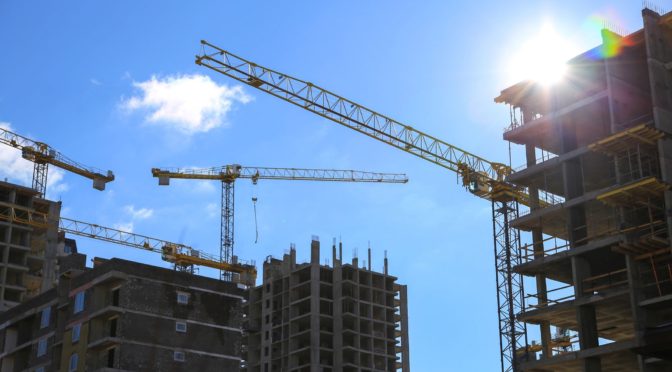A Ticking Time Bomb: Risks of Renewing Commercial Property Loans in 2024
The American financial system stands on the precipice of a potential tremor in 2024. Not from earthquakes or stock market crashes, but from the quiet ticking of a time bomb: a vast swathe of commercial property loans approaching their renewal date. Over $1.5 trillion worth of these loans will mature next year, and the uncertain economic climate has cast a long shadow over their renegotiation, potentially triggering a series of cascading risks for the financial system.
A Perfect Storm of Uncertainties:
Several factors converge to create this precarious situation:
- Shifting Market Dynamics: The pandemic’s impact on commercial real estate lingers. Office vacancy rates remain high, retail struggles to adapt to online shopping, and hospitality faces a new normal. These challenges erode property values, impacting the collateral backing these loans.
- Rising Interest Rates: The Federal Reserve’s ongoing fight against inflation has driven interest rates upward. This significantly affects borrower affordability, putting pressure on them to repay or renegotiate at significantly higher interest rates, potentially pushing some into default.
- Geopolitical Turbulence: The war in Ukraine and global supply chain disruptions add further pressure to the economic landscape. Higher energy costs and material shortages impact construction and operation costs,affecting tenants and ultimately, loan viability.
- Regulatory Environment: Evolving regulatory guidelines around climate change and building standards could necessitate costly retrofits for older buildings, adding another layer of financial strain on borrowers and lenders alike.
The Cascade of Potential Risks:
If a significant portion of these loans experience distress or default, the consequences could ripple through the financial system:
- Bank Stability: Banks heavily invested in commercial real estate loans could face significant losses, impacting their capital adequacy and lending capacity. This could lead to tighter credit conditions for businesses and individuals alike, hampering economic growth.
- Investor Confidence: Weakening commercial real estate values could trigger a chain reaction, impacting other asset classes like real estate investment trusts (REITs) and mortgage-backed securities. This could lead to capital flight and market volatility.
- Domino Effect: Defaults and distress in the commercial real estate market could have ripple effects on other sectors, particularly construction, hospitality, and retail, potentially leading to job losses and a broader economic slowdown.
385 American banks, most of them smaller, regional ones facing bankruptcy in 2024 due to bad commercial real estate loans up for renewal, according to a new report by the National Bureau of Economic Research (NBER). Lower property values, increased interest rates, and declining office demand could lead more firms to default on their loans and fear of banking collapse will cause people to withdraw deposited money accelerating bank bankruptcies in USA.
Mitigating the Risks: Navigating the Labyrinth:
Avoiding these worst-case scenarios requires proactive measures from various stakeholders:
- Loan Modifications: Lenders and borrowers need to work collaboratively to restructure existing loans, potentially extending terms or adjusting interest rates to reflect current market realities. Open communication and flexible solutions are crucial.
- Government Intervention: Policymakers could consider targeted interventions like tax breaks or loan guarantee programs to incentivise investment and stabilise the sector. Measures to address affordability concerns in housing markets could also indirectly support commercial real estate by boosting tenant demand.
- Industry Adaptation: The commercial real estate industry itself needs to embrace innovation and adaptability. Exploring alternative uses for struggling properties, embracing hybrid work models in office spaces, and fostering sustainable energy solutions can enhance viability and attract new tenants.
- Diversification Strategies: Lenders need to diversify their loan portfolios to minimize exposure to any single sector. This could involve increasing their focus on sectors less vulnerable to economic downturns, like healthcare or infrastructure.
A Call for Vigilance and Collaboration:
The year 2024 looms large as a potential flashpoint for the American financial system. The fate of these maturing commercial property loans hangs in the balance, with their renegotiation holding the key to stability or potential turmoil. Vigilance, open communication, and proactive measures from lenders, borrowers, policymakers, and the industry as a whole are crucial to navigate this challenge and mitigate the risks. Ignoring the ticking time bomb will only amplify its potential explosion. By understanding the complexities of the situation and working together, we can chart a course towards a smooth renegotiation and a resilient financial future for America and beyond.
Subscribe for free business risk alerts to inform your business decision making to navigate major threats to your business and seize new business opportunities
Discover new ways to maintain and expand your business growth and build business resilience with BusinessRiskTV
Read more business risk management articles watch videos and receive risk reviews

Business Risk Management Club